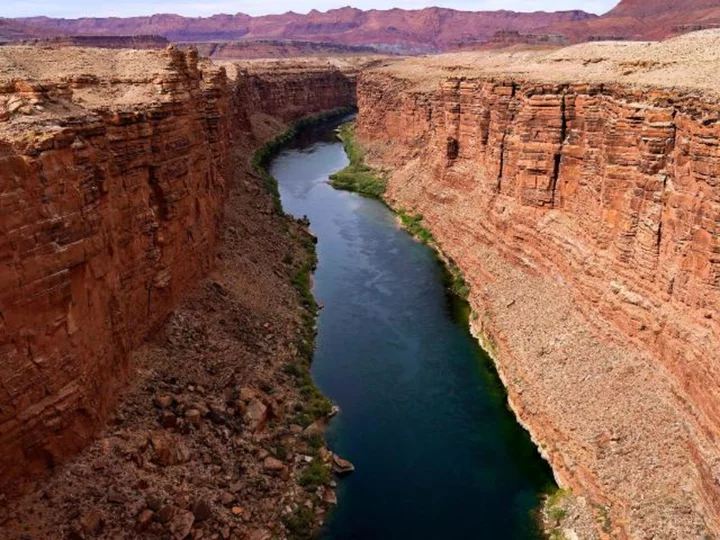Rising temperatures have sucked more than 10 trillion gallons of water out of the Colorado River Basin between 2000 and 2021 -- a volume about the size of Lake Mead -- according to a recent study.
Researchers at UCLA found the human-caused climate crisis is contributing significantly to the decline of the Colorado River, which runs through seven Western states and provides drinking and irrigation water for around 40 million people. Higher temperatures in the West have resulted in about a 10% decrease in the river's flow in the last two decades, according to the study, which was published in the American Geophysical Union's Water Resources Research.
The climate crisis has had such a significant impact on the basin that without it, the river's first-ever water shortage would not have been declared, the researchers found. The Tier 1 shortage took effect in January 2022; a Tier 2 shortage -- due to even lower water levels at Lake Mead, the nation's largest reservoir -- was implemented in January 2023.
"When we set out on this study we were aware of the mega-drought and the impacts it was having on Lake Mead's water levels," Benjamin Bass, a water resources engineer and the study's lead author, told CNN. "We really wanted to provide a study that was able to look at that long-term drought event and the impacts of anthropogenic climate change."
State leaders and water users along the Colorado River have spent much of the last two years scrambling to find ways to cut their water usage as the system spiraled to alarming lows.
Last summer in particular set off alarm bells when the water level in Lake Mead dropped an astonishing 20 feet over the course of four months. Mead, fed by the Colorado River, fell to its lowest level to-date in July 2022, with lake elevation of 1040 feet. If it falls an additional 145 feet, the reservoir hits "dead pool," the point at which it's unable to provide water or hydroelectric power to millions of customers.
The increased evaporation from rising temperatures is especially problematic in snowier states like Colorado, where the river's headwaters begin.
"It's increasing more across the snow-packed region as compared to regions without snowpack," Bass said, noting that reductions of water are happening "twice as fast" in snowier regions. That's in part due to a positive albedo effect -- what happens when more snow melts with higher temperatures, exposing darker ground that absorbs still more heat.
Bass and a team of researchers at UCLA conducted the experiment by modeling stream flow in the Colorado River basin under two conditions: one with historical temperature conditions and one where they removed the impacts of anthropogenic warming caused by climate change. They found that climate change-driven temperatures have had a dramatic impact, reducing flows over time.
Even though last winter dumped above-average snowpack and water into the basin, Bass said that the 10% reduction in flow from 2000 to 2021 has remained consistent, even during wetter years.
"That's occurring for wet or dry years," Bass said. "Even though there's been a wet winter, there's still going to be that 10% reduction in runoff."
The UCLA study came to a similar conclusion as one conducted by scientists at the National Center for Atmospheric Research and the National Oceanic and Atmospheric Administration, which projected an 11.7% decrease in annual stream flow, factoring in climate change.
Despite using different models, NCAR hydrometeorologist Ethan Gutmann told CNN the two studies came to the "same conclusion."
"We expect the longterm increases in temperature that we know are going to continue and since the Colorado River basin in particular seems to be very sensitive to temperature, we expect runoff in this basin to continue to decline," Gutmann said.
A blockbuster winter has helped Mead's levels inch up this summer. The reservoir is expected to reach a high point of 1,070 feet in February 2024, according to the most recent federal data. Meanwhile, federal officials and state water users will soon start formal negotiations to see how water use in the basin can further be reduced, an attempt to counteract decades of overuse combined with the hotter and drier future in the Western US.
"Unless greenhouse gases are curbed, those [water] reductions are going to continue to track with temperature increases," Bass told CNN.

